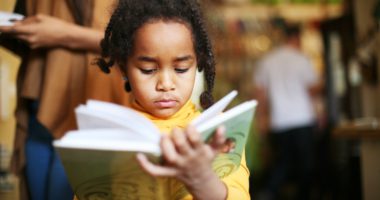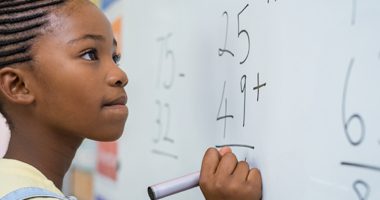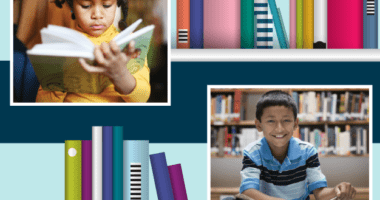Building Bridges to Make Equity Accessible for Students with Learning Disabilities
John B. King Jr. provided opening keynote remarks at the Learning Disabilities Association of America’s annual conference. This year, the conference theme focused on “Making Equity Accessible.”
Introduction – Building Bridges to Make Equity Accessible
Thank you for the kind introduction and the warm welcome to sunny Florida. It is a pleasure to join you at your annual conference.
I’m encouraged by your conference theme — “Building Connections: Making Equity Accessible.”
The educators, counselors, researchers, parents, and individuals with learning disabilities in this room understand the importance of connections.
Every educator, counselor, and practitioner here likely can say that the positive relationships and strong connections that you build with the young people you serve are critical in your work.
Every researcher here likely understands that in order for your reports and your studies to have impact, you must ensure that your research connects with those who can most benefit from your findings.
Every parent and caregiver here likely can attest that your loving connection to your children is what drives you to ensure that they receive the services and accommodations that can help them thrive.
And so many individuals with learning disabilities say that in order to successfully advocate for their own needs, they have had to develop a real connection with themselves, and an understanding of what is most effective in supporting their personal success.
Connections are hugely important—they help us build bridges from challenge to opportunity, from potential to possible.
As African-American scholar and novelist Ralph Ellison once noted, “Education is all a matter of building bridges.”
And that is exactly what I’d like to speak with you about today…the notion that to truly make educational equity accessible and to put rich, rigorous, engaging learning opportunities within reach of all students, as a nation, we must build stronger bridges of support both for students with learning disabilities and for their educators.
But before I go deeper, I want to share how a great education—and great teachers—built a bridge for me to be standing in front of you today. You see, education built the bridge that saved my life.
The Bridge that Saved a Life
Some of you may know that I grew up in New York City and I attended New York City public schools. My mom passed away when I was 8 years old in October of my fourth-grade year. Afterward, during the period when I was living alone with my dad, he was quite sick with undiagnosed Alzheimer’s disease. There were some nights when he would be mad, some nights when he would be sad, some nights when he wouldn’t speak to me at all.
I vividly recall one night when my dad woke me up to go to school, but it was 1 or 2 in the morning. I remember clinging to the banister in my house and begging with my dad telling him, “No, it’s not time to go to school,” and I remember how confused and scared I felt then. Things in my home life were unpredictable and chaotic.
And then my dad passed away when I was 12, and I bounced around between family members’ homes.
But during this whole period, school was this amazing place that was compelling and interesting and safe. And I was blessed to have Mr. Osterweil as my teacher in fourth, fifth, and sixth grades, who created this space that countered the chaos in my life outside of school with amazing experiences in the classroom.
We read The New York Times every day. We went to the zoo; we went to the Museum of Natural History and to the ballet. We did productions of A Mid-Summer Night’s Dream and Alice in Wonderland. In fact, one of my first-ever experiences public speaking was when I was cast as The Rose in Alice in Wonderland. I stood there on stage with big, red, felt petals sticking out of my head. I’m sure you can just imagine it.
Those experiences were transformative. The opportunity to learn language, to engage in rich text and understand history and current events, and to work in partnership with my diverse peers in the development of all of those productions. Those were powerful, life-changing educational experiences.
Mr. Osterweil opened up a whole world to me and to his other students far beyond our experiences in Canarsie, Brooklyn. And it’s because of educators like Mr. Osterweil that I’m alive today.
My life…as an African-American, Latino male student in New York City Public Schools with a family in crisis…could have gone in many different directions.
That I am not in prison or dead today is because of excellent teachers, who created a bridge for me from the unpredictability of my home life…to the supportive, nurturing structure of school…to a vision of the potential that they could clearly see in me, but that I had trouble seeing within myself.
Four “To Do’s” to Make Equity Accessible for Students with Learning Disabilities
So, as you embark on the learning in which you’ll engage and the connections that you’ll make at this conference, I have a few “to-do’s” that I’d like to encourage you to keep in mind so that, collectively, we can build stronger bridges of support that make equity accessible for students with learning disabilities.
First, we must be the champions that promote positive perceptions of students with learning disabilities and all they’re capable of achieving.
We must then do real work to ensure that the special education system not only delivers high-quality services and supports, but that it also delivers justice—particularly for students of color with disabilities.
Next, we must ensure that educators have the knowledge, skills, and supports to help students with learning disabilities to grow, develop, and thrive in school.
And, finally, we must see the humanity in each and every one of our students and let that inform how we both reach and teach them.
I will share a little more detail on each of these “to-do’s,” in turn, as we go along this morning.
Being Champions for Students with Learning Disabilities: Changing Perceptions and Removing Stigmas
You just heard me share why a rich and engaging education was transformative for me personally. And, as an educator, I’ve seen the benefits when students with disabilities are provided with rigorous academic experiences that interest and inspire them and that include the appropriate accommodations so that they can meaningfully engage in their learning.
But far too often, students with learning disabilities—such as dyslexia, dyscalculia, and dysgraphia—and attention issues, such as ADHD, are misunderstood.
Particularly for students with average or above-average intelligence, their learning disability can almost be “invisible,” which makes these students susceptible to the false perception that when they experience challenges in school, they are just not trying hard enough.
And on the flip side, students with learning disabilities and attention issues also can be viewed as not being capable of meeting high expectations.
Both of these perceptions are wrong, and we must actively work to dispel them.
Because of advancements in brain science, we know that our students with learning disabilities have differences in brain structure and function that contribute to them learning differently. Our students are not lazy or unintelligent.
With the right educational supports that are informed by research and evidence of what works, and high expectations that are connected to high-quality instruction and appropriate services and supports, students with learning disabilities can succeed in rigorous coursework.
Indeed, high expectations for students with disabilities were recently codified at the highest level by the U.S. Supreme Court.
As you may know, in 2017 in a rare unanimous decision, the Court clarified in the case of Endrew v. Douglas County School District that every child with disabilities not only is entitled to a free appropriate education in public schools, but that “every child should have the chance to meet challenging objectives.”
The Court further noted that it’s not enough for a student’s Individualized Education Plan to be calculated so that the child makes minimal progress.
Instead, the Court emphasized that every student’s IEP should be written to enable the child to make progress appropriate in light of his or her circumstances.
This represents a huge step forward and should help all of us—educators, practitioners, parents and families, and students—to shatter perceptions about what is possible in special education…and to advocate for a higher standard of education for children with disabilities.
When I think about the impact that high expectations and the right supports can have on our children, I think of a student named Chris, who I met when I was an educator at a middle school in Massachusetts.
Chris came to the sixth grade with second- or third-grade reading skills, maybe even less than that. He really could not read. Chris compensated for his struggles in reading by listening incredibly well. He was engaged in school, but sadly, he had internalized that he was not smart; although he was smart and insightful. Over and over, the message that he had gotten from school was around what he couldn’t do rather than what he could do. My school had Chris evaluated and we found that he was dyslexic. Finally, Chris got the supports that he needed and he learned how to read. He became a solid student, and he grew so much more confidence in himself as a learner. That experience showed me that, for our students, it really is about getting the right instruction at the right moment. Doing so can have huge academic and social-emotional benefits. Chris went on to thrive in school and to succeed in the military.
But not every student’s experience is like Chris’s.
We have work to do when recent national tests show that in fourth grade reading, 85% of students with learning disabilities scored at the below basic level (compared to 27% of students without disabilities).
We have work to do when those same national tests show that, in eighth grade math, nearly three-quarters of students with learning disabilities scored at the below basic level (compared to 21% of students without disabilities).
We have work to do when the high school graduation rate of students with learning disabilities lags behind the national average by about 10 percentage points…and when more than a third of Black, Latino, and Native American students with learning disabilities leave high school without a regular diploma.
And we know we have work to do when students with learning disabilities are less likely both to enroll in and graduate from college than their peers without disabilities.
A big part of building stronger bridges of support for our students entails dismantling the stigmas associated with learning differences.
The researchers, counselors, and practitioners in this room are key, for example, in dispelling myths for parents that children simply outgrow learning differences. And you are key to creating a supportive and understanding community that can help to ease the anxieties of parents—almost half of whom, when surveyed, said that they wouldn’t want others to know if their child has a learning disability.
The teachers and school leaders in this room are integral in breaking down stigmas, particularly when you view disability as an important element of diversity.
Educators who hold this view, for example, create school cultures that value students’ differences. You view accommodations like assistive technology and more time to take tests not as a burden, but as a critical means of leveling the field for students with disabilities.
And you implement research-backed schoolwide approaches to curriculum design and instruction that have been shown to meet the needs not only of students with disabilities, but of all students—such as a Multi-Tiered System of Supports and Universal Design for Learning.
As writer and advocate ShaRhonda Knott-Dawson recently noted, “When we design schools with children with disabilities in mind from the start, the accommodations benefit everyone.”
And for parents and families in the room, you help to eliminate misconceptions about learning disabilities whenever your support for your children is empowering and facilitates in them a sense of “I can.”
Ensuring the Special Education System Delivers Justice
To build a strong bridge of support that makes equity accessible for students with learning disabilities, we have to be champions for our children—dispelling myths and misconceptions, holding high expectations, and ensuring that the special education system delivers quality, research-based services and supports.
We also must work to ensure that the system delivers justice—particularly for students of color with disabilities—which is my second “to-do” for all of us.
Children of color—particularly Black youth—are over-represented in the special education population.
This is a disparity that we must address.
To do so, we have to ensure that the overrepresentation of students of color is not the result of misidentification, which can include both over- and under-identification of students for special education services.
Addressing overrepresentation is absolutely critical to helping schools make sure that the right services get to the rights students in the right way.
And although teachers, school leaders, and counselors go into their profession out of an abundance of care for children, everyone who works with kids must do the hard, internal work of identifying and addressing our own biases—which each of us carries within us.
Ensuring that the special education system delivers justice for students of color also entails disrupting current trends that show Black students with disabilities are suspended and expelled at higher rates than their proportion of the population of students with disabilities.
Data show that the large majority of out-of-school suspensions for Black students with disabilities are actually for non-violent behavior. And it is especially troubling that Black students with disabilities are more likely to be expelled without receiving any educational services.
This approach is fundamentally wrong. When a student performs poorly on a math test, for example, we don’t look at that student and say, “No more math for you!” But when a student experiences challenges with behavior we too frequently say, “No more school for you!”
This cSan have profound, negative effects on student outcomes.
Research shows that when our students with disabilities miss class time due to excessive exclusionary discipline, their overall engagement in and enjoyment of school declines. And their likelihood of being held back a grade, dropping out of school, and interacting with the law increases.
To create a more just system for students of color with disabilities, we must look to alternatives to exclusionary school discipline.
Part of that entails creating communities within classrooms that are intellectually and emotionally safe and brave spaces for learning, and implementing proactive, evidence-based strategies like Positive Behavioral Interventions and Supports.
Part of that entails ensuring that students of color—who are more likely to attend schools with sworn law enforcement officers but no school counselors—have equitable access to those vital education professionals.
And part of creating a more just system entails getting at root causes when students make mistakes. Employing restorative practices. And recognizing when behavioral issues might actually be signaling that a student’s learning disabilities need to be better accommodated through different strategies or interventions.
The student disrupting class, for example, might be having difficulty interpreting nonverbal cues or decoding new vocabulary words.
Promoting equity in special education was the reason why, about three years ago, the Obama administration released a framework for states to determine if their school districts have disproportionately high numbers of students of color identified for special education services, segregated in restrictive classroom settings, or disciplined at higher rates than their peers.
The current administration should do all it can to assist states in coming into compliance with those regulations. And the Department of Education should support districts with significant disproportionalities in their special education programs to take action on equity.
Supporting Educators to Teach Students with Learning Disabilities
Now this brings me to our third “to-do.” For students with disabilities to truly access educational equity, we also must build a bridge of support for educators to effectively teach students with learning differences. And that bridge must extend from educator preparation programs all the way through to professional development and continuous learning once teachers are in classrooms.
We know that the vast majority of students with learning disabilities and attention issues spend 80% or more of their school day learning in general education classrooms. But a recent national survey revealed that only 30% of general education teachers feel strongly that they can successfully teach students with learning differences.
That teachers feel this way is little wonder.
Far too many teachers complete their educator preparation programs without having been required to take coursework on serving students with disabilities.
And for those teachers that do, many say that the courses they did take left them feeling underprepared for the daily realities of working with students with disabilities.
While teacher training programs have a responsibility to do more to prepare educators for the inevitability that they will teach students with learning differences in their classrooms, states also have a responsibility to do more.
That’s because, across the country, state educator certification requirements set a very low bar for ensuring that general education teachers have the knowledge and skills to teach students with disabilities.
Indeed, less than 10 states have specific coursework requirements to help teacher candidates understand how to work with students with mild to moderate learning disabilities.
To build a stronger bridge of support for teachers, preparation programs should train all teacher candidates in how to read an IEP and use it to optimize their instruction.
Importantly, training programs also should include courses and fieldwork—as well as student teaching—that require teacher candidates to demonstrate their understanding of how to successfully serve students with disabilities.
Ideally, meeting the needs of diverse learners should be integrated throughout a teacher preparation program so that teacher candidates have many opportunities to put what they’re learning into practice.
I’m encouraged by the example that Syracuse University is setting.
There, any undergraduate seeking to earn a degree in elementary education also must enroll in a dual program focused on “inclusive elementary and special education.” Both coursework and clinical experiences on teaching students with disabilities are embedded throughout the program. When students graduate, they are eligible for certification in both elementary general education and special education.
And right here in Florida, the Collaboration for Effective Educator Development, Accountability, and Reform Center out of the University of Florida is doing valuable and wide-reaching work. The Center has helped more than 20 states to enhance their teacher preparation programs with a focus on training teachers to serve diverse learners, including those with special needs.
While improving educator preparation is vital, the bridge of support that we build for teachers has to extend beyond their training.
In a recent survey, one-third of teachers said that they had not participated in any professional development on serving students with disabilities. That has to change. School districts can help by making professional learning opportunities available to new teachers during their onboarding and induction and throughout their careers. And schools can make time for general education and special education teachers to collaborate and learn from one another.
Seeing the Humanity in Our Students with Learning Disabilities
I’ve spent some time today sharing my ideas for how we can build bridges of support both for teachers and students so that educational equity is within reach for children with learning disabilities.
And my final “to-do” in this regard is centered on our students.
Perhaps some of the mightiest bridges of support and connection that we can build with children are formed when we recognize their humanity.
This means, as educators, we take the time to understand each of our student’s needs and how best to support them.
It means that in classrooms, we encourage students to work through challenges, allow them to make mistakes, enable them to take risks in their learning, and celebrate their successes.
And it means that we provide multiple pathways for students with learning disabilities to demonstrate what they know and are able to do.
It’s also vital that we show our students both windows and mirrors.
Eye to Eye, for example, is an organization that was created by and for individuals with learning issues.
Run out of the University of Wisconsin-Madison, Eye to Eye connects college students who have learning disabilities to middle school students with disabilities via an afterschool program.
Seeing older students who are succeeding provides the children with a vision of what is possible. The unofficial motto is: “If I can do it, so can you.”
That same sentiment brought 2018 State Teacher of the Year Kara Ball to work in education. Kara has dyslexia and dyscalculia.She committed to becoming a special educator after her own 10th grade math teacher, frustrated by Kara’s challenges, told her that she would “never amount to anything.
“Kara made the decision then and there that she would become a teacher so that none of her students would ever be made to feel like they were “less than” because of their disability. And each day, Kara provides a powerful example for her students, who can see someone with a learning disability as a successful leader in their community.
Recognizing the humanity of students with learning differences also requires that we, as adults, are proactive in setting them up for optimal success.
For example, schools, families, institutions of higher education, and employers should engage with students early in transition planning so that students are prepared to thrive after high school.
And colleges should do more to streamline their processes to apply for accommodations.
This is especially important when we know that 76% of students with learning differences do not report their disabilities, and a lack of appropriate supports can decrease their chances of graduating.
When we truly see our students, we’re better able to reach and teach them.
Closing
All of us are here at this conference today because we seek a future in which every student with learning disabilities receives an equitable education—from preschool through college—that opens doors to a fulfilling life.
We are here because we seek schools and a society that are both richer for their recognition that disability is an important element of diversity…and that diversity benefits us all.
We are here because we seek a world for students of color with disabilities in which justice is the norm.
To achieve all of these things, we must be bridge builders. I’m both humbled and energized to be in this work with you.
Thank you.











